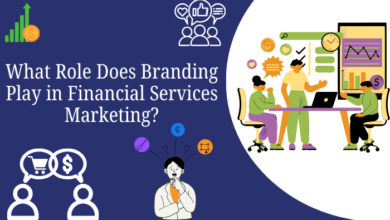Traditional Marketing vs Digital Marketing: The Ever-expanding Scope Debate

The scope of digital marketing is ever-expanding. This rapid change has led to a heated debate in the marketing world: which is better, traditional or digital marketing?
In this blog post, we’ll explore the different aspects of both traditional and digital marketing and discuss the ever-expanding scope of online marketing.
Understanding Traditional Marketing
Traditional marketing refers to the promotion of products and services through traditional media such as print, radio, television, and billboards. It relies on the principles of push marketing, where the advertiser pushes their message out to the target audience.

Traditional marketing techniques have been in use for centuries and have been effective in reaching a wide audience. For instance, newspaper and magazine ads have a broad readership, while billboards can reach commuters on the go.
Traditional marketing tactics are tried and tested and can create a level of trust in the minds of consumers.
Understanding Digital Marketing
Digital Marketing is an umbrella term that includes various online marketing activities. It uses digital channels such as search engines, social media, email, and mobile applications to reach out to potential customers.
The objective of it is to create a brand presence, build relationships with customers, and promote products or services.
The digital world is rapidly expanding and evolving, and so is Internet Marketing. This is why it is critical to keep up with the latest trends, tools, and techniques. It offers marketers several advantages, such as:
- Targeted Reach
- Measurable Results
- Cost-Effectiveness
- High Engagement
Scope of Traditional Marketing
Traditional marketing is the form of marketing that has been around for the longest. The scope of traditional marketing is vast and can cater to a wide range of audiences.
For instance, a billboard in a busy location can reach a vast number of people, including those who may not have access to social media. Traditional marketing also allows businesses to target specific demographics like specialized magazines or local newspapers.
It can also be used to create a sense of legitimacy and credibility in a brand, as consumers are often more trusting of businesses with established media presence.
Scope of Digital Marketing
In the digital age, it’s hard to ignore the power of online marketing. The scope of digital marketing has been expanding rapidly over the past few years and it shows no sign of slowing down.
It provides businesses with a global audience. Brands can target their audience based on their interests, demographics, and behaviors.
Digital marketing today means deft in tools like search engine optimization (SEO), search engine marketing (SEM), content marketing, and more. With the advent of technologies like artificial intelligence (AI), it has become even more targeted.
The scope of digital marketing is not limited to big brands. Small businesses and startups can leverage digital marketing to level the playing field with established companies.
Advantages and Disadvantages of Traditional Marketing
Despite the advent of Internet marketing, traditional marketing still holds significant importance in the advertising world. But it has its advantages and disadvantages.
- Easy to Understand: It requires little to no technical skills. Most people are familiar with traditional advertising methods such as print ads, radio commercials, billboards, etc.
- Better Targeting: Businesses can easily target specific geographic regions and demographics to reach out to the right audience.
- Tangible and Relatable: It offers a tangible and relatable experience. Unlike digital ads that appear on screens, print ads and direct mail marketing materials are tangible.
Disadvantages
- Limited Reach: Traditional marketing is limited in terms of reach. A business can only target a specific geographic region or audience.
- Expensive: Traditional marketing can be expensive. TV commercials and print ads are not only expensive but require long lead times to create.
- Difficult to Measure: Businesses may not be able to track how many people saw their ad or the number of conversions it generated.
Advantages and Disadvantages of Digital Marketing
With the ever-growing reliance on technology, it’s no surprise that businesses are starting to prioritize digital marketing over traditional methods. Here are some advantages and disadvantages:
- Cost-effective: It is more cost-effective, as there are numerous free online platforms and tools that businesses can use to reach their target audience.
- Targeted audience: With tools like Google Analytics, they can target and track the behavior and demographics of their audience and adjust their strategy accordingly.
- Higher engagement: Its methods, like email marketing and social media, have higher engagement rates.
- Measurable results: With the use of analytics tools, businesses can measure the success of their digital marketing campaigns, allowing them to make data-driven decisions
Disadvantages
- Oversaturation: With the increasing popularity of Internet marketing, the competition for audience attention is higher than ever.
- Technical issues: With the constant updates and changes to technology, there can be technical difficulties that businesses may find.
- Limited reach: Not everyone has access to the internet or digital devices, which can limit the reach of digital marketing campaigns.
The Future of Marketing: The Importance of Digital Marketing
Digital marketing has completely transformed the marketing industry and continues to expand its scope with every passing day. In today’s world, it is impossible to deny the importance of digital marketing and its role in reaching customers on a global scale. With the increasing number of digital users, businesses have recognized the need for a strong digital presence to stay relevant in the market.
The benefits of digital marketing are immense, with its ability to reach a larger audience through different platforms, target specific demographics, measure ROI, and adapt strategies according to real-time feedback. The trend of using social media, email marketing, and SEO to promote brands has been on a steady rise, and it has proved to be an effective way to generate leads, engage with customers, and boost sales.
However, this does not mean traditional marketing is losing its importance. Rather, a blend of both digital and traditional marketing strategies can result in a powerful marketing campaign that reaches both digital and non-digital consumers. The incorporation of traditional advertising methods, such as television, radio, and print, with digital advertising can help reach a wider demographic and ensure maximum brand visibility.
With the growth of e-commerce, internet marketing has become more important than ever before, and it has made it possible for businesses to sell their products and services online and reach customers in every corner of the world.
The future of marketing is largely dependent on digital marketing, with the increased use of mobile devices, smart home devices, and the internet of things. It will continue to expand its scope and evolve with new technology, creating new and exciting opportunities for businesses to connect with their audience.




